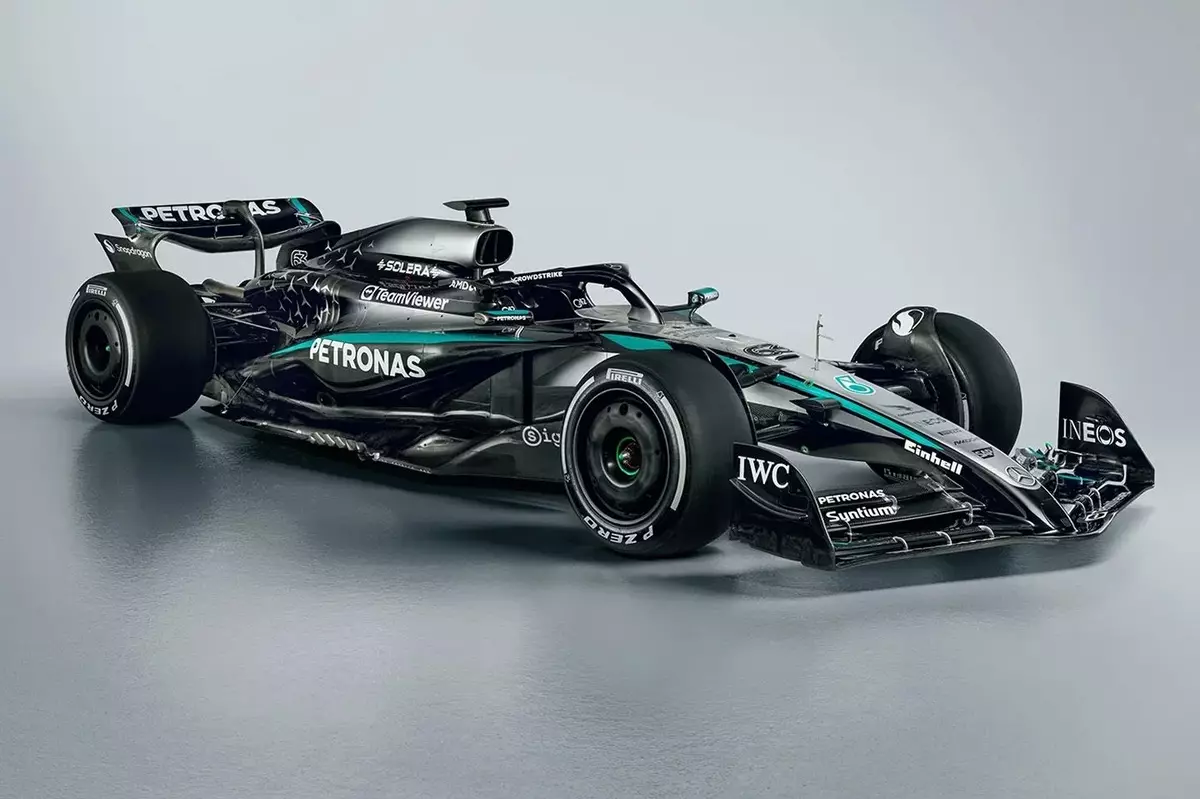The Mercedes Formula 1 team has officially introduced its 2025 challenger, the W16, setting the stage for what promises to be an exciting season. The car’s initial reveal came after a glimpse of its striking livery at the F175 launch event in London, where fans caught their first look at the team’s 2025 design concept utilizing an older platform. As they prepare for the upcoming season, the spotlight is now on the specifics of the W16 and the ambitions it carries for both the team and its drivers.
Amidst the changes, George Russell has stepped up as the principal driver for the Silver Arrows following Lewis Hamilton’s move to Ferrari. This transition marks a significant shift within the team, with Russell, who has logged considerable time with Mercedes, now carrying the mantle of leadership. Additionally, 18-year-old Andrea Kimi Antonelli, a prodigious talent rapidly integrated into the driver lineup, is set to make history as the youngest driver to compete for Mercedes. Having quickly advanced through the team’s junior ranks, Antonelli is expected to bring fresh energy and perspective to the squad.
Mercedes faced notable obstacles during the previous season. Despite enjoying moments of brilliance, including two race victories each for Russell and Hamilton, the performance of the W15 fluctuated considerably, leaving Mercedes trailing behind fierce competitors like McLaren, Ferrari, and Red Bull. The struggles pointed to inherent issues with the ground-effect design that limited the car’s adaptability across diverse circuits. As a result, Mercedes ended the 2024 season in a disappointing fourth position in the Constructors’ Championship.
Russell reflected on the team’s continual struggle for optimization, emphasizing the cyclical nature of problem-solving within F1. “We say every year we’ve uncovered a problem, we’ve solved it, and it’s created a new one,” he remarked. This acknowledgment is an important part of the team’s evolution as they aim for a more consistent performance throughout the upcoming races.
The W16 heralds a pioneering approach, with Mercedes stating that it has reinvented “every aerodynamic surface” of the vehicle. This strategic overhaul includes a completely redesigned front suspension aimed at enhancing cornering abilities and addressing the previously noted tire temperature discrepancies. Technical director James Allison articulated the team’s focus on overcoming the W15’s tendencies, particularly its difficulty in navigating slow corners, which had compromised overall competitive performance during races.
This commitment to innovation is a fundamental aspect of Mercedes’ strategy as it builds towards future seasons. The team plans to conduct a filming day at Bahrain International Circuit before the official pre-season tests set for the end of February. As anticipation builds, the stakes are high for the newly designed W16, which aims to not only resurrect Mercedes’ competitive edge but also lay the foundation for future success.
With the introduction of the W16, Mercedes is poised at a crucial juncture of pioneering changes aimed at elevating its competitive stance. As the team prepares for the upcoming season, all eyes will be on how Russell and Antonelli adapt to the car’s new dynamics and how they leverage their contrasting experiences for the benefit of the Silver Arrows. The upcoming weeks will be pivotal in assessing whether these changes translate to success on the track, potentially reshaping the landscape of Formula 1 in 2025.

